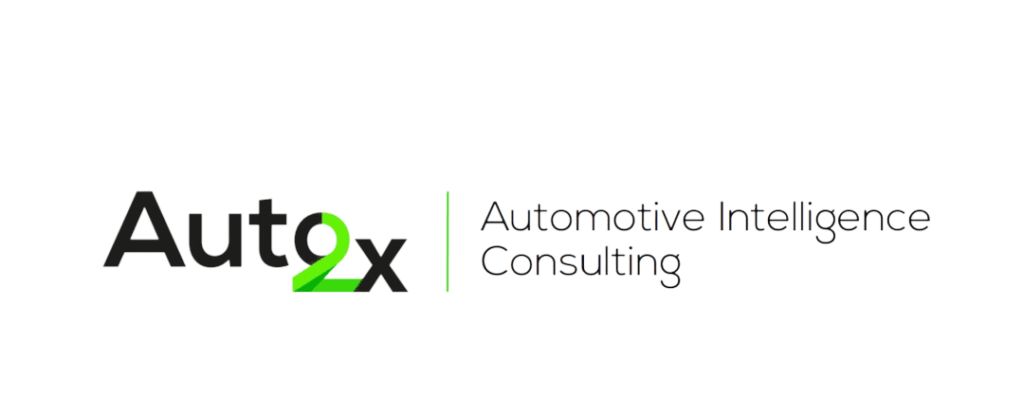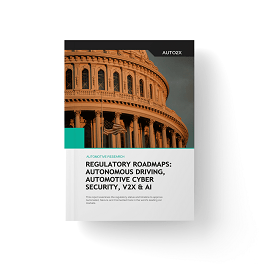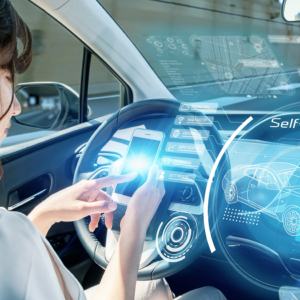Description
Learn about the big opportunities in Software-Defined vehicles, from the promising technologies and top innovation clusters to leading players and favourable markets.
Software-Defined Vehicles (SDV) are the automotive industry’s term to describe a new generation of vehicles which feature advanced technologies to be continuously updated on demand and enable true connected and automated driving. Auto2x
Software is the answer to the Digitization of Automotive Industry but delivery is still challenging
Electrification, automated driving, shared mobility and connectivity push for more dedicated software development, while a large part of hardware-oriented systems becomes more standardized and commoditized.
Software & AI represent new value pools. Major Tier-1 Suppliers are already monetizing the growth. For example,
- Bosch has already been building Vehicle super-computers for ADAS & Automated driving and received more than €2.5 Billion worth of orders in this domain in 2020. They expect the market to be worth €20 Billion by 2030.
- Renault creates a new mobility unit and expects that it will account for 20% of their revenues by 2030
Bosch expects Software-Defined Vehicles will generate €200 Billion by 2030, a 3-fold increase from 2020
The digitization of the Automotive Industry demands a shift to SDVs, but challenges remain
- Learn about top innovation clusters across major technological building blocks of SDVs:
-
- EE Architectures: Assess the roadmaps of leading carmakers and suppliers in the development of centralized architectures and their partnerships;
- CarOS: Learn about the rising adoption of Google’s Android Automotive OS and the competitive offerings from MBUX and other players;
- Open-source software development: In May 2023, General Motors joined the Eclipse Foundation, an open source software foundation, and announced its own software protocol called “uProtocol” to streamline software creation
- Cloud: the emergence of automotive cloud as a key enabler for cloud-based ADAS development, development of offerings from carmakers and the role of Microsoft, Amazon among others;
- Over-the-Air-updates (OTA), and the opportunities for features-on-demand;
- Digital Twin
- Understand the progress of regulation and how to overcome the challenges of continuous homologation and certification of new vehicle features through OTA updates;
- Assess the strategies and capabilities of leading carmakers, suppliers and emerging start-ups;
- Discover forecasts of adoption and scenarios for the evolution of competition.
Cars are becoming Software-Centric which creates opportunities and challenges in development cost, complexity, security and monetization
One of the biggest challenges facing today’s vehicle networks is the vast amount of data that is produced—and will exponentially increase as vehicles become increasingly autonomous and connected and are required to process vehicle-to-vehicle and vehicle-to-infrastructure communications.
SDV create new opportunities to reduce the complexity from the rise of features and variants, accelerate feature development time, streamline costs and enable SOTA updates on demand.
Lower software development cost is key for faster and more efficient automotive development. Re-usable software platforms are needed to lower development costs.
Finally, Android Automotive OS will become the mainstream operating system enabling carmakers to offer intuitive HMI and 3rd parties to integrate connected services.
SDVs will unlock the potential of Cloud-centric development and lifecycle
The benefit of cloud-centric development is the virtual development of ADAS features, virtual Validation, as well as Cloud-streaming content for infotainment, such as game-streaming.
But players face challenges with Cloud integration.
“VW’s AC is expected to handle data from millions of vehicles per day, with the goal of delivering connected experiences to customers around the globe starting in 2022 – a key part of the Volkswagen Group strategy to become a leading automotive software innovator”. (Source: VW, January 2021)
Built in-house software systems for in-car and vehicle-related services to develop differentiating software parts
In an effort to replicate Tesla’s successful model of developing in-house SW systems, traditional car makers like VW, opt to develop their one in-house SW platform. This approach promotes harmonized integration of future embedded hardware and software systems but needs a large number of vehicles in order to mitigate the increasing per/unit development cost.
VW has recently announced that it will develop its own standard software platform and will boost the in-house share of software development, in order to achieve a 60 per cent in-house software production by 2025.
According to the Group’s announcement, by 2025, all new Group vehicles will be equipped with VW’s operating system “vw.os” and will be connected to the Volkswagen Automotive Cloud. In order to confront production complexity issues, emerging especially from the SW-HW integration, VW plans to produce a smaller number of versions in which the individual configuration will no longer be set through the hardware when the vehicle is purchased; instead, desired functions will be available on-demand at any time using the in-vehicle digital ecosystem.
Toyota has recently established the Woven by Toyota, a company that focuses on the development of a more agile “software-first” in-vehicle ecosystem for future Toyota vehicles. The company has developed the Automatic Map Generation (Geo) which aims at dramatically improve the resolution of road gradient information by utilizing Toyota’s vast amount of vehicle data and increase the frequency of 3D map updates from 6 months to the same day. In addition, Woven by Toyota, currently integrates Toyota’s operating platform Arene OS; in order to enhance its ADAS, connectivity and cockpit capabilities.
The current E/E automotive architecture has reached its scalability limits
The requirements for autonomous driving, connected cars and electrification are pushing for new vehicle architectures to address flexibility, cost, speed, and compliance.
Players are moving towards a Domain or Zonal E/E architecture to support mass-electrification and connected cars.
With the move from domain-based architecture to zonal-based architecture, 10G+ links (typically redundant) between the electronic control units (ECU) will be required.
To enable SDVs, a Service Oriented Architecture (SOA) is created that hosts applications and services that communicate and exchange data. New functionality in SDV can be easily added if SOA is present.
Software-Defined Vehicles will open new monetization strategies with “Features-on-demand” (FoD)
Data monetization is a huge opportunity for carmakers, but it’s hindered by currect architectures, connectivity and OTA. Automotive players need to identify the most suitable applications and guarantee owner / user privacy.
Tesla has already enabled FOD for its ADAS features. For the first time, Audi is offering its customers in Norway and Germany the possibility to book selected functions on demand, even after purchasing the vehicle. Customers can book functions in the areas of lighting, driver assistance, and infotainment flexibly and as required.
Domains such as vehicle or component repair, predictive maintenance, software over-the-air updates, and battery-as-a-service create new opportunities for players.
But compliance and regulatory challenges for continuous homologation need to be resolved
Continuous compliance of OTA updates is still a challenge because standards are vague. What’s more, the regulatory framework for SDV features is not harmonized across the world.
A streamlined regulatory approval of newly-added features using robust certification frameworks could fast-track adoption and remove the roadblocks autonomous driving is facing.
Table of Contents
- Executive Summary
- Key Technology Trends driving Software-Defined Vehicles
- Player strategies
- Regulation for continuous homologation
- Forecasts: Mass-market commercialisation




